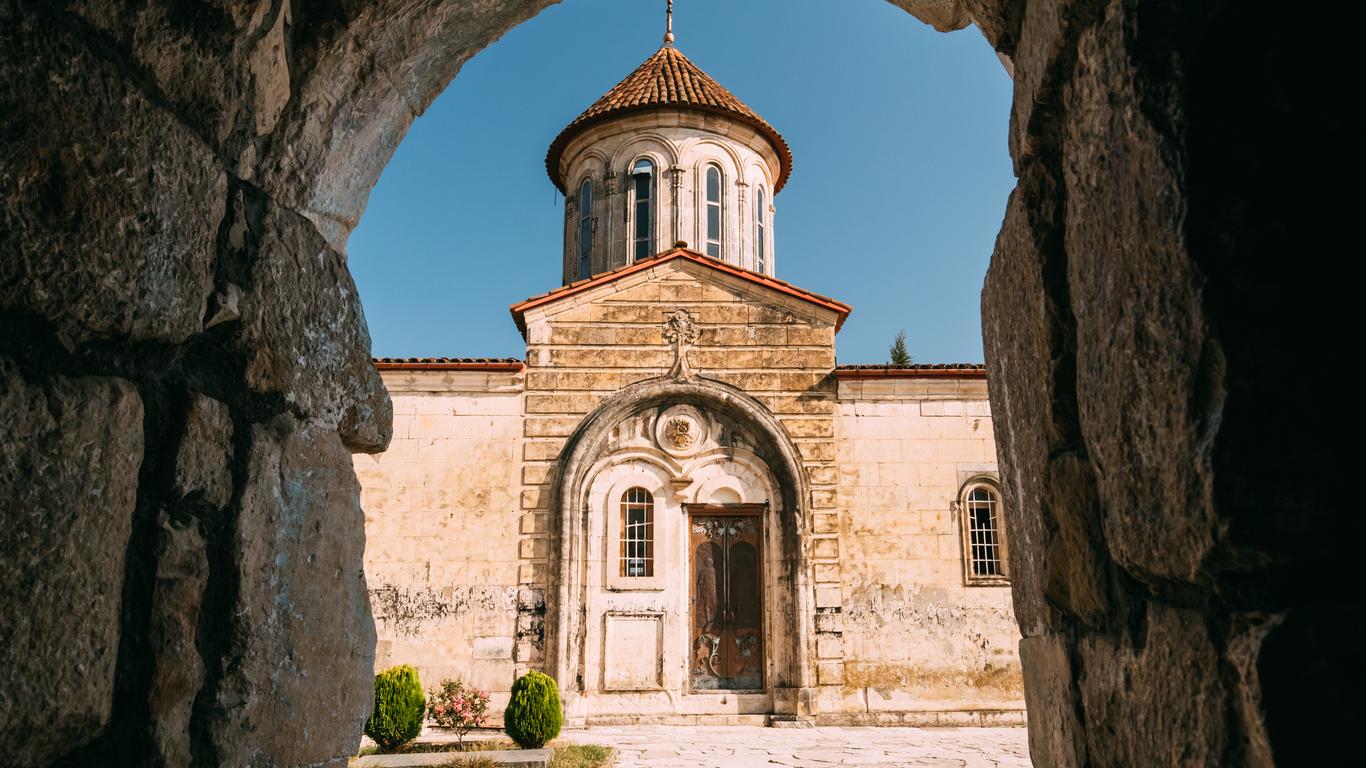Hugging the banks of the Rioni River in western Georgia, Kutaisi is one of the oldest continuously inhabited cities in the world. It has served as a capital for successive civilisations and kingdoms, including the ancient Cochis, the 9th-century Kingdom of Abkhazia and the late medieval Kingdom of Imereti.
Things to do in Kutaisi
Occupying a former National Bank of Georgia building is the Kutaisi State Historical Museum, which houses exhibits dedicated to the country’s archaeological, ethnographical and religious heritage. At the Kutaisi Museum of Martial Art, you’ll find weapons and uniforms illustrating the history of martial arts in Georgia, as well as its involvement in World War II and the Russo-Georgian War of 2008.
Rising atop Ukimerioni Hill north of Kutaisi’s city centre is the Bagrati Cathedral, an 11th-century house of worship considered a masterpiece of medieval Georgian architecture. After suffering heavy damage, it was restored during the 20th century and has been designated as one of the Great Cathedrals in the Georgian Orthodox world. Nearby is the terraced Kutaisi Botanical Garden with its leafy walking trails.
A short drive east of Kutaisi is the UNESCO World Heritage-listed Gelati Monastery, which was founded in 1106 by King David IV. It was designed in the shape of a cross and features reflective stone walls that would make it visible across much of the country. Byzantine-style mosaics decorate the interior, the largest of which depicts the Virgin Mary and Jesus.
Getting around Kutaisi
David the Builder Kutaisi International Airport is a 30-minute drive from the city centre and has flights to destinations across Europe and the Middle East. Trains connect from towns and cities throughout Georgia to the Kutaisi I railway station while buses access most of Kutaisi’s attractions.





